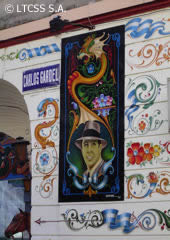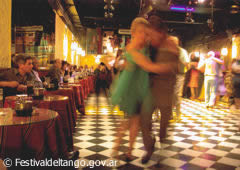Tango has its own life history. From its far-off birth at the end of the 19th Century to its vigorous present, it has gone through various stages.

After a picaresque and provocative beginning, the first years of the 20th Century turned it melancholic and bleak. It was the times of the legendary Carlos Gardel, who took it to Paris and then enjoyed a triumphal return to Buenos Aires.
Undoubtedly, the 40’s were the golden age of tango. Musicians and composers multiplied themselves -as tango dancing did- in countless clubs and milongas.
During the 60’s, with the rock & roll boom, the popularity of tango decreased significantly. It carried the stigma of being “music for the old”. However, it kept on breeding new talents. Astor Piazzolla is the most representative artist of this period, and founder of the tango avant-garde. His innovative proposal, based on a new kind of sonority, definitively broke with tango’s orthodoxy.
 The last years of the 20th Century find tango with renovated strength, once again supported by its increasing popularity in the United States and Europe. Young people rediscovered its old lyrics and, as inheritors of Piazzolla’s legacy, undertook the task of experimenting on the basis of tango.
The last years of the 20th Century find tango with renovated strength, once again supported by its increasing popularity in the United States and Europe. Young people rediscovered its old lyrics and, as inheritors of Piazzolla’s legacy, undertook the task of experimenting on the basis of tango.
And this is how we arrive at present, in the 2020’s when tango welcomes everyone: typical orchestras to dance, proposals of fusion with diverse genres (even electronica!), milongas where devotees of the old style lecture the young people who approach, once again in love with this “danced feeling of melancholy” inaugurated by their grandparents.